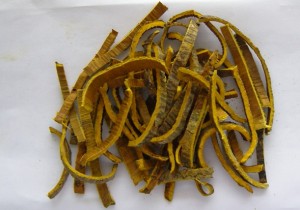[retweet][facebook]
Acupuncture and Chinese herbal medicine combine well with biomedicine. The turtle acupuncture technique often helps. Although distinctly different systems, they often combine to produce superior clinical results. Two common examples are the application of acupuncture to post-surgical sites to prevent invasive infections and the spraying of herbal medicine onto the cervix to reverse cervical dysplasia.

Bone plugs, hip replacements and other surgical installations & procedures run the risk of introducing microbes into the system. In the 19th century, Joseph Lister pioneered the importance of sterile surgical equipment and the cleaning of wounds with carbolic acid in an effort to reduce post-operative infections. Fast-forward to today’s operatories and advanced antibiotics, surgery has become immensely safer. Nonetheless, the risk of infection persists. Patients with compromised health conditions such as immunosuppression and diabetes are particularly vulnerable. Moreover, areas of poor blood circulation are often sites of unwanted microbes.
A simple application of acupuncture beyond the circumference a non-healing wound often helps to enhance the microcirculation of blood to the affected region. The turtle technique, wherein a needle is placed at four corners just outside the area of a wound, is often effective in closing non-healing wounds and sores. Electroacupuncture is often added to this technique to enhance the healing process.
Electroacupuncture is often effective in warding off infections due to complications from hip replacement surgery. In these cases, patients usually visit an acupuncturist’s office for the treatment of hip pain. They may have had more than one surgery to clear the infection and may have had multiple rounds of antibiotics prescribed. An acupuncturist quickly learns of the patient’s ongoing struggle with microbial complications during a patient intake. The acupuncturist acts not only to reduce pain but to also eliminate the infection by taking supportive measures. Acupuncture allows the antibiotics to work efficiently and effectively. By working together, biomedical and TCM approaches play an important role in the patient’s recovery.
Patients are encouraged to continue with their current antibiotic use. The application of electroacupuncture through the affected region from acupuncture points outside the area of infection is often enough to catalyse satisfactory clinical results. Acupuncture enhances the microcirculation of blood to the affected region. The combination of acupuncture with antibiotic oral intake creates a synergistic medicinal effect. According to Traditional Chinese Medicine (TCM) theory, acupuncture activates the channels and has a channel leading function for the antibiotics to reach their optimal effectiveness. The same electroacupuncture procedure can be performed for repeated failing bone plugs in the ankle thereby making the current bone plug a successful implant.
Time and again patients, doctors and staff at wound care centers do their very best. Acupuncture is not better. It is entirely different. By encouraging patients to continue with their biomedical wound care procedures and antibiotics, an acupuncturist can optimize systemic and local immunities to facilitate a positive clinical outcome by enhancing measures taken by biomedical experts.
Herbal medicine also combines well with advances in biomedicine. For the following example, a topical herbal medicine procedure for the treatment of cervical dysplasia, cervical infections, cervicitis and cervical erosion is enhanced by the use of modern equipment available in a gynecologist’s office or biomedical center. Note that this procedure is not legal in some states wherein herbal medicine regulations do not allow for the topical application of herbs to the cervix.
The following is not a prescription and is for educational purposes. It is absolutely not a treatment for cervical cancer. Traditionally, a combination of Wu Bei Zi and Ku Fan is made in a 10:6 ratio. A total of 30 grams of Wu Bei Zi and 18 grams of Ku Fan are combined into a dry power. Ingredients are often sterilized with ultraviolet radiation. Water is not added to avoid issues of acidity.
A gynecologist uses modern equipment to spray the powder directly onto the open cervix. After the menstrual cycle, the power is applied once per day for three days to the cervix. This is repeated for three menstrual cycles. Local washing is performed daily prior to re-applying the topical powder.
Huang Bai is an alternative topical herb for cervical dysplasia according to TCM.
Other ingredients such as Huang Bai, Qing Dai and Bing Pian have also been used for this purpose. Extra care must be taken if using Bing Pian as it may irritate the skin and cause complications. An older technique used prior to the development of modern equipment was to place the herbs on a wad of cotton gauze. The gauze is then inserted up against the cervix and then changed every day. Modern equipment makes the procedure more effective and safer.
Please visit our new location in Glen Rock, New Jersey. Our clinic also serves Hawthorne, Ridgewood, Fairlawn, and Midland Park.
Excerpt from:
